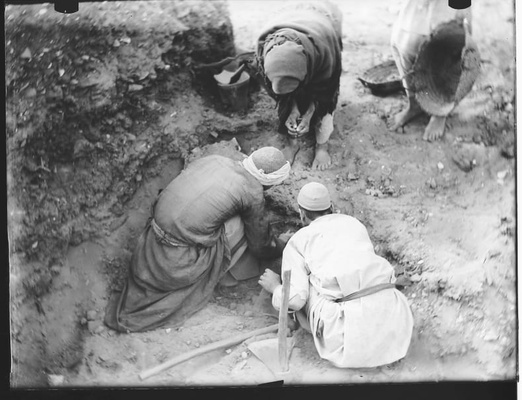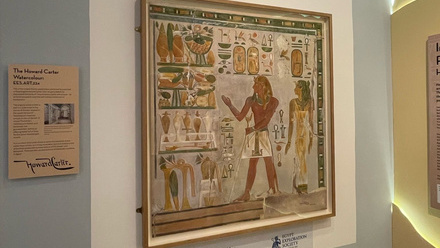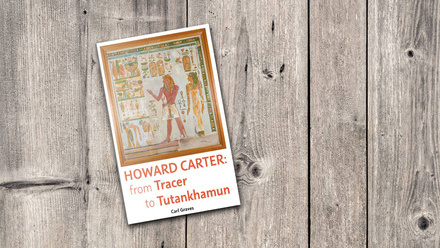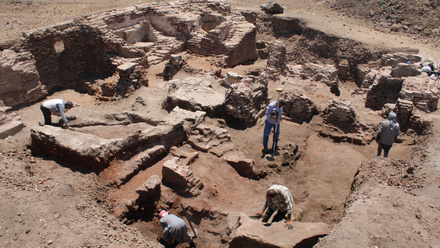The EES Graeco-Roman Branch
By Stephanie Boonstra
After the founding of the Egypt Exploration Fund by Amelia Edwards in 1882, the Fund’s focus was the survey, excavation, and documentation of ancient Egyptian, typically pharaonic, sites. Although some work was conducted on sites that dated to the Graeco-Roman Period, it was not a main focus of the Fund’s archaeologists.
That is, until Grenfell and Hunt began to work for the EEF.
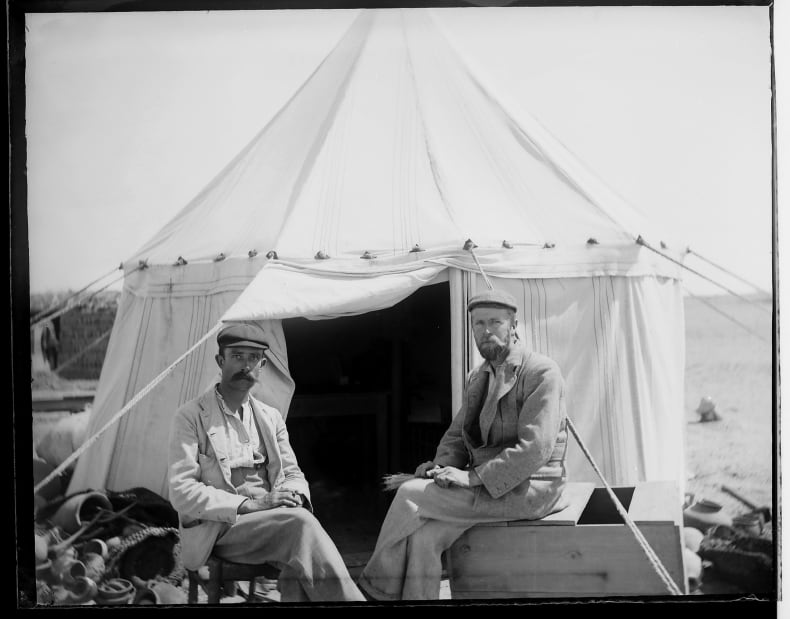
Bernard Pyne Grenfell (left) and Arthur Surridge Hunt (right) outside their bell tent at Tebtunis in 1899 (GR.NEG.053).
Bernard Pyne Grenfell (1869-1926) and Arthur Surridge Hunt (1871-1934) were two Classicists from the University of Oxford who were also close friends. Grenfell had first excavated in Egypt in 1893 and during this time in Egypt, he devoted his spare time to collecting and stuyding Greek documents written on papyrus. In 1895, he and David George Hogarth (1862-1927), another Classicist and archaeologist, worked at a couple of Graeco-Roman sites in the Faiyum and the resulting finds were deemed good enough for Grenfell to telegraph his friend Hunt to join in the work. This led to an appeal to the Fund by Hogarth at the Annual General Meeting in 1896:
Mr. Hogarth pressed upon the Society the necessity for consistently devoting some fixed share of their energies and income to the recovery of classical papyri and the prosecution of Greek archaeology in Egypt.
On this request, the Fund founded the Graeco-Roman Branch. This would ultimately lead to a decade of work by Grenfell and Hunt on Graeco-Roman sites in Egypt and the discovery of hundreds of thousands of inscribed papyrus fragments.
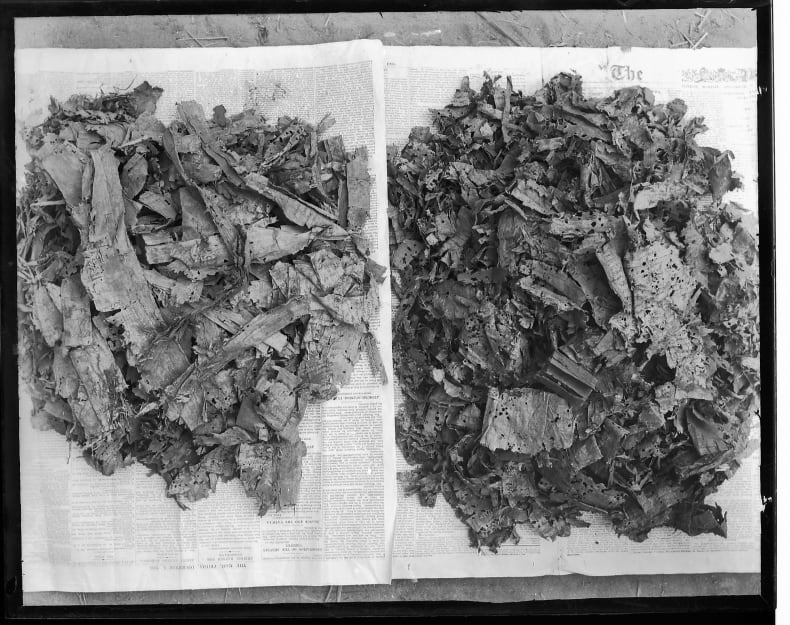
Fragments of recovered papyrus - these little fragments are often called 'cornflakes' by papyrologists due to their small and flaky appearance (GR.NEG.222).
From 1896 to 1907, Grenfell and Hunt directed excavations at several Graeco-Roman cemeteries in the Faiyum on behalf of the Fund. Their aim was to find mummified humans wrapped in cartonnage constructed of discarded papyrus. Although they did discover large quanities of papyri cartonnage, and papyri in general, in the Faiyum, the Graeco-Roman Branch’s greatest success, however, was at the ancient city of Oxyrhynchus (al-Bahnasa) to the south of the Faiyum, where they uncovered roughly half a million papyrus fragments.
The EES archive contains many photographs of unnamed Egyptian local workers[1] performing the arduous task of sifting through the rubbish mounds of Oxyrhynchus to find the c. 500,000 fragments of papyrus (GR.NEG.207; GR.NEG.135).
Grenfell and Hunt, along with a team of up to 30 foremen (many from the village of Lahun, roughly 90 kms away, near the Faiyum) and 180 local Egyptian men and children, concentrated their excavations at Oxyrhynchus on the massive rubbish mounds next to the remains of the ancient city. The excavations focussed on the retrieval of hundreds of thousands of fragments of papyrus that had been discarded in these mounds. While Grenfell stayed on site to supervise the excavations, Hunt remained at the tent to process the vast amount of papyri that were uncovered each day.
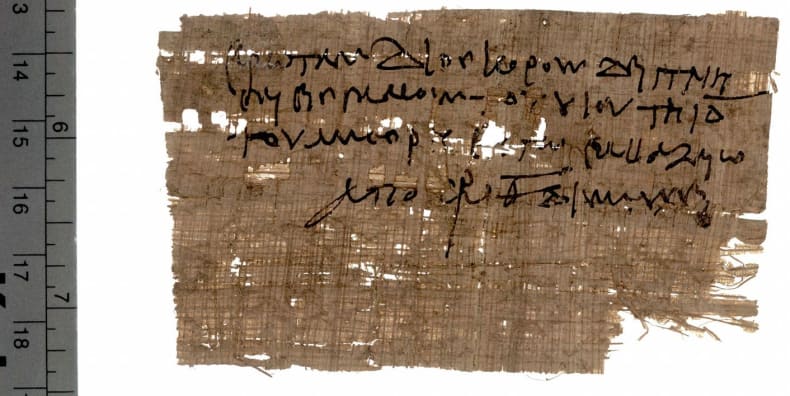
A 3rd century CE invitation to a marriage feast (P.Oxy.XXXIII 2678).
They were rewarded with an amazing trove of ancient Greek literary pieces, including fragments of texts by Homer, Plato, Sophocles, Sappho, and more. Alongside the Classical texts that they had expected, they also recovered multiple early New Testament texts – which proved to be particularly popular with the Fund’s many supporters among the clergy. More abundant, however, were the many more ‘mundane’ fragments that were discovered, including legal texts, contracts, shopping lists, even wedding invitations!
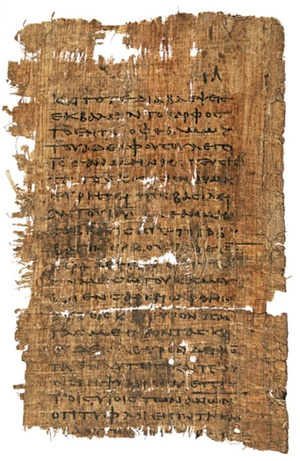
Although some of the larger papyrus rolls were retained in Egypt as per the colonial partage system in place at the time (see Stevenson 2019 for more details), roughly 500,000 fragments were brought to the University of Oxford to allow Grenfell and Hunt to study and publish the fragments in the still running Graeco-Roman Memoirs. Many of these fragments are still held in Oxford in the Papyrology Rooms of the Bodleian Art, Archaeology, and Ancient World Library where they continue to be researched and published. The EES Papyri and Cartonnage collections remain one of the largest and most important collections of their kind, providing a unique glimpse into aspects of Graeco-Roman Egyptian life – from the lives of the elite to those of the everyday person.
Left: Logia Iesu 'Sayings of Jesus' from the apocryphal Gospel of Thomas, c. 200 CE (P.Oxy.I 1).
[1] We do know from Petrie’s archive (held at the Petrie Museum of Egyptian and Sudanese Archaeology) that the well-respected archaeologist Ali Suefi (from Lahun) was one of the ‘Illahunis’ (as Grenfell called them) working at Oxyrhynchus during its first season. Unfortunately, the EES archive does not contain any lists of names or details of the Egyptian workforce employed by the Graeco-Roman Branch.

